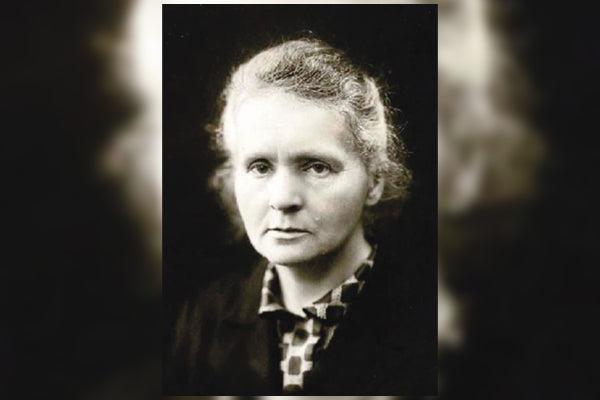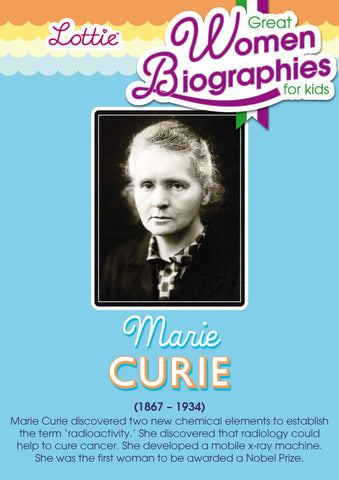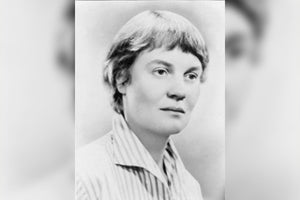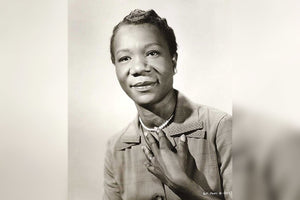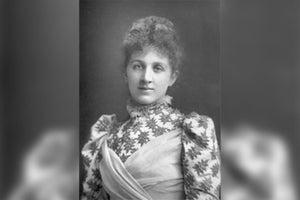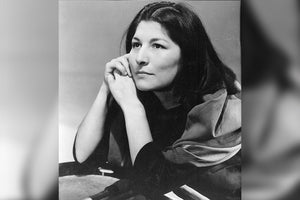« Nothing in life is to be feared, it is only to be understood. Now is the time to understand more, so that we may fear less. »
« Be less curious about people and more curious about ideas. »
« Have no fear of perfection; you’ll never reach it. »
Marie’s Childhood
Maria Sklodowska Curie was born in Warsaw on November 7th 1867, the youngest of five children. Both her parents were teachers. Marie’s mother was a headmistress and her father taught Maths and Physics. These were subjects Marie showed a particular interest in and worked hard at.
Marie had a tragic early childhood. Aged 10, Marie’s sister died from typhus and two years later her mother died from tuberculosis.
Marie’s father struggled to support his family, but Marie hoped to go to university. This was an unusual choice for a woman at the time.
Marie agreed to support her older sister’s education, working as a governess
and tutor. In return, once her sister had graduated as a doctor, she would help to pay for Marie’s own education
Marie’s Education
In 1891 Marie moved to France to begin her scientific studies at the Sorbonne (afamous French university where women could attend).
By 1894, Marie had achieved a degree in both Physics and Maths, despite facing much opposition to her education.
Whilst at University Marie met Professor Pierre Curie and they married in 1895.
Marie’s Scientific Discoveries
In 1895 scientist Wilhelm Roentgen discovered the existence of x-rays.
Another scientist Henry Becquerel noticed that a strange source of energy came from the chemical element Uranium.
In Paris, Marie and Pierre began to further research the rays discovered by Roentgen and Becquerel.
After conducting many experiments into the structure of atoms, she discovered that these x-rays were given off by the element uranium.
As a result of this research, Marie introduced the term ‘radioactivity’ to describe elements that emitted strong rays.
In 1903 Marie, her husband Pierre and scientist Becquerel were awarded the Nobel Prize in Physics for their work on radioactivity.
Pierre and Marie Curie in the laboratory
Discovery Of Two New Elements
Through her research on uranium, Marie went on to discover two new chemical elements. These were Polonium (named after her home country Poland) and Radium (named after radiation). Marie and Pierre did not have a laboratory and so did many of their experiments in a converted shed.
In 1911 Marie was awarded the Nobel Prize in Chemistry for the discovery of these elements. She was the first person to be awarded two Nobel prizes - a great achievement especially for a woman at the time. Tragedy Overcome
Marie faced tragedy in 1906 when her husband Pierre was killed after being knocked down by a horse and cart.
Despite this difficult time however, Marie remained even more dedicated to her scientific research and followed her husband’s dreams of expanding the laboratory.
Her further research led her to discover that radiation could kill human cells. Marie reasoned that the same radiation must be able to kill unhealthy cells too – without this discovery we wouldn’t have many of our modern cancer treatments.
After Pierre’s death, Marie took over his professor post at the University of Paris. She was the first woman to ever teach there.
Marie And The First World War
During the First World War, Marie worked hard on the front line to support troops in battle. Along with her 17-year-old daughter Irene, Marie developed a mobile x-ray machine, which were called ‘Petites Curies’ (Little Curies). This machine meant that bullets and pieces of metal could be located inside the bodies of injured soldiers.
Marie also trained 150 other women to use the x-ray machines. This important piece of equipment helped over 1 million soldiers.
After the war Marie founded the Radium Institute to raise money for research into radioactivity. She spent some time in America on a tour to raise funds for the institute.
Curie in a mobile X-ray vehicle
The First Lady Of Science
Marie died from Leukemia in 1934. This was caused by exposure to radiation over many years. The damaging effects of radiation exposure had not been known at the time. When scientists handle radioactive material today they have to wear special protective suits.
After Marie’s death, her work still remained very important. In recognition of her commitment to science, she was the first woman to be laid to rest under the dome of the Pantheon in Paris. Marie had to overcome many barriers due to her position as a woman but she remained dedicated to her work and was a great role model for other young female scientists. Her daughter Irene followed in her mothers’ footsteps and later went on to be awarded the Nobel Prize in chemistry.
![]() Fast Shipping
Fast Shipping![]() Subscribe to our Newsletter
Subscribe to our Newsletter![]() 🌟 New Global Competition 🌟
🌟 New Global Competition 🌟